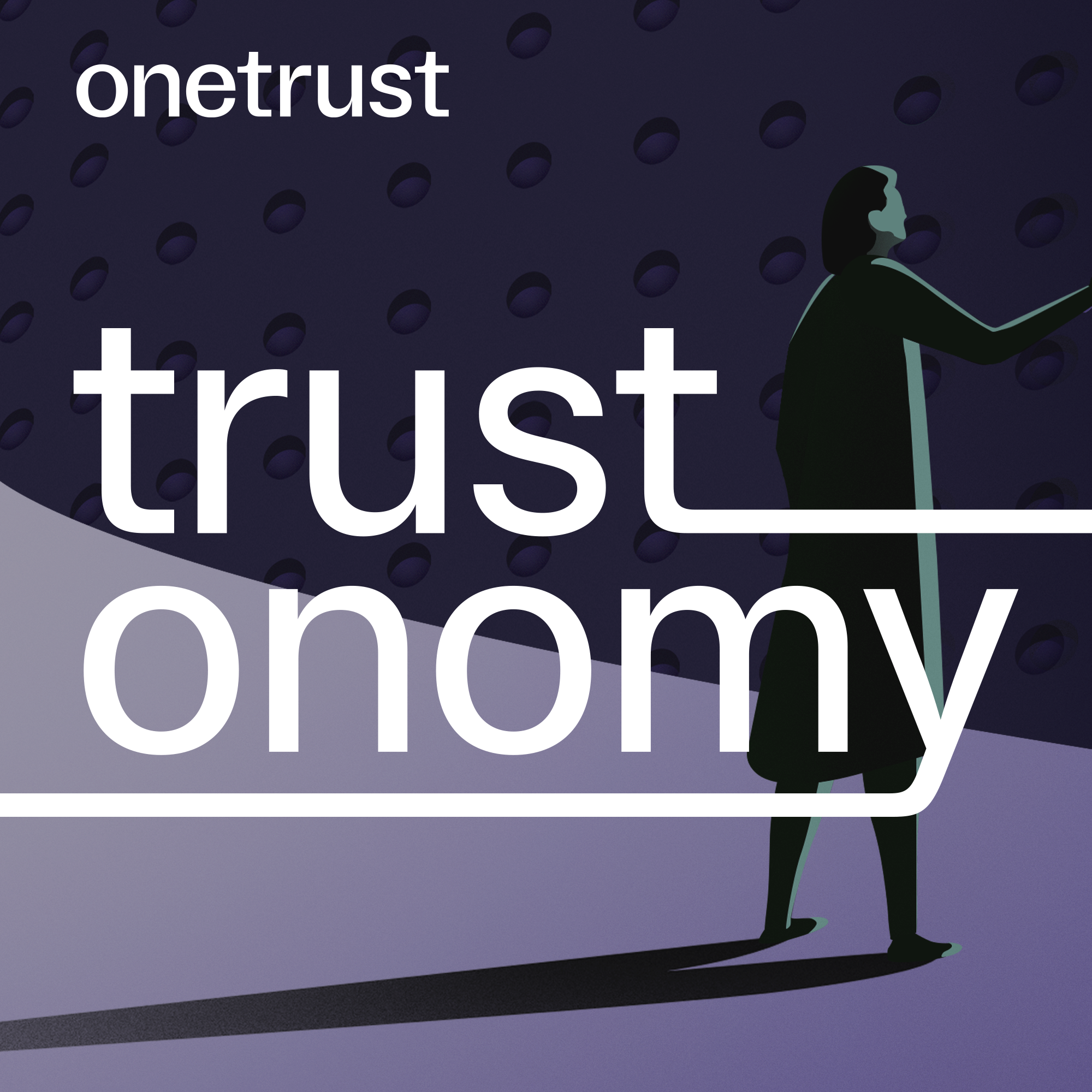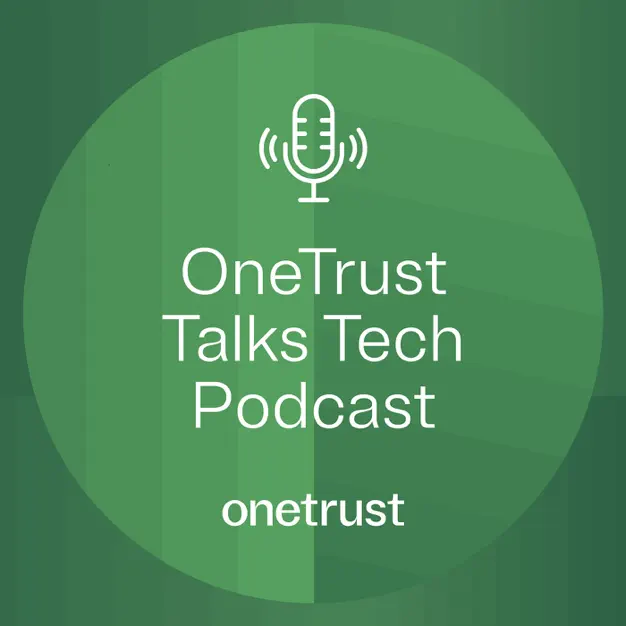Oct. 26, 2023
On-demand webinar coming soon...
On-demand webinar coming soon...
Episode 3: The missing data that doomed Pearl Harbor

About this episode
On December 7, 1941, Japan attacked Pearl Harbor, drawing America into World War II. Admiral Husband Kimmel, a decorated veteran and commander of the US naval fleet in Hawaii, was completely caught off guard. But it didn’t have to be a surprise. How did the US forces at Pearl Harbor miss the critical warning signs? Mismanagement of important intelligence data played a significant role.
Steve Twomey, author of Countdown to Pearl Harbor: The Twelve Days to the Attack, explains why the US forces at Pearl Harbor were unprepared for the attack, and Scott Bridgen, former Global GTM & Strategy Lead-GRC & Integrated Risk at OneTrust, explains why data discovery and data management could have prevented this military catastrophe.

Guest
Steve Twomey

Guest
Scott Bridgen
Steve Twomey is a Pulitzer Prize winning writer, former Washington Post reporter, and author of Countdown to Pearl Harbor: The Twelve Days to the Attack, rated one of the five best history books of 2016 (Smithsonian Magazine), and the best book about Japan of 2016 (The Japan Times).
Scott Bridgen is the former Global GTM & Strategy Lead - GRC & Integrated Risk at OneTrust.
Shalene Gupta:
December 7th, 1941. Another idyllic Sunday morning on the island of Oahu, Hawaii. Admiral Kimmel, commander-in-chief of the United States Pacific Fleet is at home in his quarters overlooking Pearl Harbor. Everything seems ship-shape, in order, just the way Admiral Kimmel likes it, until...
Steve Twomey:
He's told that the Japanese are attacking the harbor. He goes out on his lawn and he sees planes diving all over the place. He begins to see his ships being hit by torpedoes. He can see one of them start to roll over because it has been hit so many times.
Shalene Gupta:
A neighbor notices Admiral Kimmel standing on the lawn, half dressed in his uniform.
Steve Twomey:
She said he stood there like a statue of marble, frozen by what he was seeing down in the harbor beneath him.
Radio Announcer #1:
Honolulu. Japanese bombs killed at least five persons and injured many others, three seriously, in a surprise morning aerial attack-
Shalene Gupta:
This was, of course, the Japanese attack on Pearl Harbor, the event that pulled the United States into World War II. Like Admiral Kimmel, stunned on his front lawn, Americans were shocked by the surprise attack. But what most people didn't know is that it shouldn't have been a surprise at all.
Steve Twomey:
It was the product of all kinds of management failures, the failure to ask simple questions or put too much trust in people.
Shalene Gupta:
In fact, key leaders had many opportunities to minimize or prevent the attack altogether.
Steve Twomey:
If they had caught the Japanese fleet thousands of miles from home and surprised the surprisers, I think the war would've been much different.
Shalene Gupta:
I'm Shalene Gupta and this is Trustonomy, an original podcast from OneTrust. In each episode, we examine stories from the past, moments when companies and organizations broke that crucial element, trust. These are fascinating and often tragic stories, but they also show us how businesses and organizations can do better today. We're learning how to build and repair the superpower of trust.
This time we are revisiting the weeks leading up to Pearl Harbor to understand how misplaced trust, underestimated risk and systemic intelligence failures set the stage for a disaster that changed the course of history. Pearl Harbor was a terrible miscalculation, and the root of that miscalculation was poor data management.
Scott Bridgen:
Obviously, Pearl Harbor is a war and intelligence story. But intelligence is information and information is data.
Shalene Gupta:
That's Scott Bridgen. He'll be back to explain how lessons learned from this surprise attack are relevant to business today. But first, we head back to Pearl Harbor in November 1941.
Steve Twomey:
It was a very idyllic place, people loved to be there. And you could not escape the presence of the Navy or the Army. They were everywhere, and there was rapid expansion going on at Pearl Harbor to accommodate the new fleet base there.
Shalene Gupta:
Steve Twomey is a Pulitzer Prize winner and the author of Countdown to Pearl Harbor: The Twelve Days to the Attack. But Steve didn't set out to write a book about the attack at all.
Steve Twomey:
I was just reading a book about Pearl Harbor and I came across this astounding piece of information that on November 27th, the Pacific Fleet had been told to prepare for war. Wait, I thought Pearl Harbor was a surprise attack. You mean they knew on November 27th there was going to be a war?
Shalene Gupta:
That bit of information sent Steve on a journey to find out what really happened. In 1941, Hawaii wasn't a US state yet, but it had become a very important territory because it was the midway point between America and Japan. American relations with the Japanese empire became strained in the 1920s following territory disputes between China and Japan. But things got worse in the 1930s when Japan invaded China and then pushed into the French colony we now know as Vietnam.
Radio Announcer #2:
Japan's latest invasion of China, which has already lasted two years, is war on a huge scale.
Shalene Gupta:
Then, in 1940, Japan declared itself an ally to Nazi Germany and Fascist Italy. President Roosevelt responded with severe sanctions against Japan and moved the Pacific Naval fleet to Hawaii.
FDR:
As President of the United States, I call for that national effort.
Steve Twomey:
The only people who could thwart the Japanese at any point would've been the American Pacific Fleet, and Roosevelt put them there precisely to be a stoplight on the Japanese.
Shalene Gupta:
And the person in charge of that stoplight?
Steve Twomey:
A man named Husband Kimmel, wonderful name. He was from Kentucky and he had served on every conceivable ship, held every sort of conceivable rank. And Kimmel would've aspired all his life to this job, this was as high as you could go in the Navy. And the Navy being the premier service in Hawaii, he was therefore the most important person in Hawaii.
Shalene Gupta:
Admiral Kimmel was convinced that when war broke out, he'd be on the offensive. He believed that the threat was somewhere out there, even if intelligence data suggested otherwise. For Kimmel, the Navy's job was to be ready to leave Pearl Harbor and attack the enemy on the open sea. They also controlled the long range planes needed to survey the Pacific. The second most important person on the island, Army General Walter "Machine Gun" Short, was responsible for defending against a land invasion.
Steve Twomey:
I think if you'd met the two men together, Kimmel and Short, it would've been instantly obvious who the type A personality was. It wasn't Short. He was yanked out of an army base in South Carolina and told to take this job. He didn't really want it.
Shalene Gupta:
The two leaders couldn't have been more different, and while they were friendly, they didn't know how to work together, how to share information and resources, or even that they should.
Steve Twomey:
There was a philosophy of, well, the other guy's gotten to this point in his career where he's been entrusted with great responsibility, so I'm going to assume he knows what he's doing. In reality, neither one knew very much about what the other was doing. It was kind of a surprising bifurcation of responsibility. They should have been much more cooperative than they were.
Shalene Gupta:
This lack of cooperation was a big reason the Japanese attack on Pearl Harbor was a surprise, because when key information does arrive, Kimmel and Short, the two most powerful people on the island, don't talk to each other about it. In the months leading up to the attack, Japan's military aggression in Southeast Asia caused negotiations to break down between Japanese and American diplomats. But US intelligence officers in Washington made a major breakthrough. They broke the Japanese diplomatic code. Now they could decipher the secret messages Japanese diplomats were sending to Tokyo and vice versa. In late November 1941, US intelligence decoded a message that set off alarm bells. In a dispatch from Tokyo, a Japanese diplomat was told to:
Steve Twomey:
Hurry things up, because after a certain date, things were automatically going to happen. And this was an amazing phrase: "Things are automatically going to happen."
Shalene Gupta:
No one knew what they meant by things. But the US Navy leaders in Washington reacted quickly. On November 27th, 1941, 10 days before the attack, they sent an urgent message to all the naval bases in the Pacific.
Steve Twomey:
Probably the most famous message ever sent in the history of the US Navy.
Speaker 7:
This dispatch is to be considered a war warning.
Steve Twomey:
Now, Kimmel and none of his officers had ever seen a sentence like that. They were amazed because it was so blunt. And Short got a similar message from the Army, not quite as elegant and simple, but he got a similar warning.
Shalene Gupta:
The message listed places in the Pacific where war was likely to break out. Hawaii was not on the list. No one thought the Japanese were capable of traveling nearly 4,000 miles undetected across the Pacific to attack Pearl Harbor.
Steve Twomey:
And that was a significant omission that Washington later regretted. So, Kimmel focused on the fact that he wasn't mentioned in the message as a potential target.
Shalene Gupta:
However, the message did contain a clear order.
Speaker 7:
Execute an appropriate defensive deployment.
Steve Twomey:
The number one thing Washington thought Kimmel would do, that any prudent commander would do, would be begin the only thing that could protect him. And that's air search. That's the only way to know if someone's coming.
Shalene Gupta:
Air search involved sending planes out to scout the Pacific Ocean and spot Japanese ships before they could attack.
Steve Twomey:
But he didn't launch any airplanes, largely because he didn't see Oahu as being on the target list, and because he had thought an attack on Pearl Harbor was lunacy anyway. This would be a waste of time to go look for the Japanese because they're not there.
Shalene Gupta:
Admiral Kimmel was also very attached to the idea that his fleet would initiate an attack. To make matters worse, Kimmel and General Short, the leaders responsible for the most important American outpost in the Pacific, didn't talk to each other about the respective war warnings.
Steve Twomey:
Neither one thinks it's necessary for the two of them to sit down and say, "How are we going to deal with this?" Each trusted the other to do the right thing, but didn't think it important to know what they were doing, which is truly amazing. So, the message intended to put him on alert and to put General Short on alert, put neither on alert.
Shalene Gupta:
That notion of trusting your leaders came from higher up the ranks as well. Kimmel's boss, Harold Stark, the Chief of Naval Operations based in Washington DC, never checked to see if Kimmel was following the order to take defensive measures.
Steve Twomey:
Days later, when another officer who was having doubts went to Stark's office and said, "Is the fleet warned?" Stark said, "Oh, they're fine. We've alerted them." And he assumed that Kimmel was doing the one thing a smart person would do, and that's look.
Shalene Gupta:
Kimmel was not looking, but he was listening. His naval intelligence unit had been listening to radio signals from Japanese ships for a long time. The US hadn't broken the Japanese naval code, but they were still able to pull important information from their radio communications.
Steve Twomey:
And you can figure out who's talking to who and where those people are when they're doing the talking. You don't know what they're saying, but movement alone tells you something: where are the ships moving?
Shalene Gupta:
In the lead up to the attack on Pearl Harbor, there was a lot of radio traffic. The Japanese ships changed their call signals. All this activity suggested something was going to happen. And then there was the war warning message. Despite all that evidence, Kimmel didn't take defensive action. And then on Tuesday, December 2nd, 1941, five days after the war warning and five days before the attack, one of the admiral's intelligence officers gave him a critical piece of information.
Steve Twomey:
He said, "Well, I don't know where four of their major aircraft carriers are." They had gone radio silent. They were giving off no radio signals.
Shalene Gupta:
Joking, Admiral Kimmel asks:
Steve Twomey:
"Do you mean they could be coming around Diamond Head?" Well, Diamond Head is the most prominent feature in Hawaii, it's an extinct volcano. He meant, could they be right coming at us?
Shalene Gupta:
Kimmel and his team chuckle at the prospect, but that's exactly where those four missing Japanese aircraft carriers, plus two more, were heading. The Japanese had pulled off an incredible feat. They had secretly launched an attack fleet of six aircraft carriers and over 30 ships. When they set sail, even the crew didn't know where they were going.
Steve Twomey:
Nothing shocked the sailors of the Japanese attack fleet more than to learn they were going to Pearl Harbor. This to them sounded crazy.
Shalene Gupta:
Even after the war warning, Kimmel chose to believe those missing carriers were docked back in Asia. During peacetime, that might've been the logical conclusion. But tensions were building and the American public knew war was imminent. Kimmel didn't mention the missing carriers to General Short or communicate this information back to Washington, another critical misstep. Around dawn on December 7th, the US missed yet another opportunity to predict the attack. General Short was very interested in radar, a new technology that would help the army spot incoming planes or ships. Admiral Kimmel knew about this project but didn't think it was useful to the Navy. Short had crews of men set up in trucks around the island, practicing using radar to scan the skies and sea.
Steve Twomey:
They were about to go off duty at seven o'clock when their unit picked up an incoming blob of planes. And they had a brief discussion as to whether they should tell anybody about this, because they assumed that it was American planes, maybe even military planes coming in from the West Coast.
Shalene Gupta:
There was no real protocol for what they should do with this information, so they called the Air Information Center; no one answered. They finally got a call back from a lieutenant who outranked them. He was convinced they were American planes.
Steve Twomey:
He knew nothing about radar and simply said, "Nah, it's probably nothing. Forget it. Go home". And that was the end of that.
Shalene Gupta:
No one relayed the information to the Navy. And that blob of airplanes? It was a large group of Japanese fighter planes zooming towards Pearl Harbor, ready to drop bombs and torpedoes on the unsuspecting naval base. If General Short had acted on the war warning he received 10 days earlier, that lieutenant and radar crew would've had a very different reaction, one that would've given them a valuable 20-minute headstart on the attack. When the bombs started falling, everyone was caught off guard.
Steve Twomey:
A Japanese bomb drops through the deck of the USS Arizona and the ship simply disintegrates. And it's a noise that you can hear all over Oahu.
Shalene Gupta:
At 8:12 AM, Kimmel sends a message to Navy headquarters and his carriers at sea.
Speaker 8:
Hostilities with Japan commenced with air raid on Pearl Harbor.
Shalene Gupta:
The war had begun. The US troops were quick to fight back.
Steve Twomey:
Thousands and thousands and thousands of rounds of anti-aircraft fire unleashed that day. It was raining metal on Pearl Harbor and places over Honolulu.
Shalene Gupta:
At this point, there was not much Admiral Kimmel could do. As he watched the battle unfold, he realized all his assumptions were wrong.
Steve Twomey:
This is the worst moment of his life. He is standing there thinking he's watching the disintegration of the Pacific Fleet.
Shalene Gupta:
Over 2,400 Americans died at Pearl Harbor and a total of 19 US Navy ships were either damaged or destroyed. In the days following the attack:
Steve Twomey:
The country's trust and faith in the government was really staggered. And to some extent that motivated the country, but certainly didn't reflect well on the military. There were nine subsequent investigations of what happened, and there was one that began almost immediately after the attack.
Shalene Gupta:
The investigations revealed that many things had gone wrong on many levels.
Steve Twomey:
They simply weren't on the ball. It was a failure to use what was in front of you and analyze it correctly by many people.
Shalene Gupta:
What was in front of the US military was information, key pieces of data, that if managed properly, might've saved American lives at Pearl Harbor.
Scott Bridgen:
A lot of people have heard the story, seen the film, or at least anecdotally aware of what occurred. But from my perspective, it strikes me as a very traditional intelligence community situation.
Shalene Gupta:
Scott Bridgen leads global strategy for GRC at OneTrust.
Scott Bridgen:
You have strong personalities and leaders in different areas with different focuses, not recognizing the fact that their jigsaw pieces are important or critical to others in that situation.
Shalene Gupta:
Scott has a unique connection to the Pearl Harbor story. His grandfather served with the British Air Force in World War II, and Scott:
Scott Bridgen:
Spent nine years in the intelligence services, probably the closest thing to it is the CIA, working on various clandestine and other highly sensitive projects. I can't talk about that, unfortunately.
Shalene Gupta:
What Scott can talk about is how his intelligence gathering and risk assessment experience relate to data discovery and governance.
Scott Bridgen:
Data is effectively the currency of an organization. And I'm not talking like a dollar value here. Whilst data does have dollar values, I'm talking about actually the ability to operate, the ability to innovate, the ability to be able to service, excite and delight customers. There is no organization that does not run on data.
Shalene Gupta:
In the case of Pearl Harbor, the intelligence information was critical data, life and death even, and it was deeply mismanaged. To begin, there was no centralized system to collect and share information. In Hawaii, Short and Kimmel weren't sharing data, nor were they sharing data with Washington.
Scott Bridgen:
We had the information, it was there. So if they had shared information into a centralized system that was accessible to all three parties, it's possible that they could have been put on alert and started to prepare for the attack in a more efficient way. And at the very least, it would've created a conversation between all three stakeholders. And that conversation might have encouraged Kimmel to be a little less cavalier.
Shalene Gupta:
The first step to creating a data management system is data discovery. Working across your whole organization, you assemble a big picture that includes:
Scott Bridgen:
What the data is, who it belongs to, who has access to it, why they have access to it, how much is there? And then most importantly, do we need it?
Shalene Gupta:
To do this, you have to break down information silos that can spring up in your business. When silos occur, it can lead to something Scott calls data sprawl.
Scott Bridgen:
So, data is just absolutely everywhere. And the sprawl of this means that not only are you not making the most of it, there is probably information or data that you don't know exists or can appear lost. And more importantly, you're leaving yourself open to potentially negative consequences.
Shalene Gupta:
The nature of data sprawl is that it tends to get bigger and bigger. It snowballs until it's difficult to control. And when that happens, it's hard to fix because you have different people in disparate parts of an organization using incomplete data to make decisions.
Scott Bridgen:
One of the main challenges of data governance, and data management in general, is the lack of alignment between different stakeholders. If you think about it, business units, data owners, data users, data governance teams, each stakeholder may have different goals, expectations, priorities, perspectives on this that can lead to conflicts, confusion, inefficiencies.
Shalene Gupta:
Think of how Kimmel's devotion to going on the offensive led him to misinterpret the war warning and the missing Japanese airplane carriers. If Kimmel's decisions had been recorded as data points into a larger system, someone else might've had an opportunity to make better decisions. In any organization, a centralized data system:
Scott Bridgen:
Gives you the ability to provide context on that information. How is it used? Who uses it? What laws and regulations affect it or are affected by it, et cetera? So privacy, security, all that good stuff.
Shalene Gupta:
A system also helps everyone develop a shared language around data, and how to understand what matters and what to do with it.
Scott Bridgen:
If an important piece of data is collected or shared, you need to have a way to rank and flag it so the right people see it so people know what to do with it. And more importantly, so they pay proper attention to it.
Shalene Gupta:
Remember the war warning that Washington sent out to all the military bases in the Pacific? It instructed leaders to:
Steve Twomey:
Execute an appropriate defensive deployment.
Scott Bridgen:
Okay, what does that look like here? Anti-aircraft guns? Is this additional air support? Are these ships? Washington didn't provide clear expectations about what they wanted Kimmel to do with the war warning, and this poor data management resulted in Pearl Harbor being caught off guard during the Japanese attack, which likely resulted in the death of more US military personnel.
Shalene Gupta:
Scott has a tip for creating clear and effective workflows around data in your organization.
Scott Bridgen:
If/then statements can be super helpful here so your team knows how to react when they get a certain piece of information or data. What do I do? How do I do it? So, for example, it says, "If X happens, then do Y," or, "If we have data X, then do Y." So if they expected Kimmel to send out the planes, then they should have said it explicitly: if X, then Y, and marked it as a critical action item.
Shalene Gupta:
Having clear guidance is especially important when you're introducing new technology, like the radar system that detected the planes heading towards Pearl Harbor. The crew and the lieutenant at the Air Information Center were inexperienced with radar. They didn't understand the significance of the data they collected, so the military missed out on an opportunity to defend against the attack. Scott says, if you don't have proper training, it's difficult to separate data from the noise. For the radar techs at Pearl Harbor, the data was the Japanese fighter pilots. The noise was everything else. Scott sees businesses lose important data in the noise all too often, but identifying the important data is just the first step.
Scott Bridgen:
More importantly, how do I interpret it and use it so you can make informed and important business decisions? Have a good data management program in place, it makes it easier for me to determine and dictate what that noise is.
Shalene Gupta:
When it comes to data management, it's critical that the people who handle and analyze data have expertise with your collection and management technologies. But it's also important to invest in education across your entire company.
Scott Bridgen:
What you need is data literacy and culture, which are basically the skills and attitudes that enable people to understand, use and value data effectively. And data literacy and culture are essential for fostering a trust-driven and data-driven organization that can leverage data for decision-making.
Shalene Gupta:
Scott thinks the real power of a data management system is the impact it has on the culture of an organization.
Scott Bridgen:
With that level of insight, it's kind of that aha kind of moment where everyone just stops and says, "Okay, I didn't know we had this. Now we have access to this and now I have visibility of this." It gives you the ability to have smarter, more intelligent, more efficient conversations. You create a culture that encourages data sharing, collaboration, and I think most importantly, experimentation.
Shalene Gupta:
Data management systems are the scaffolding for growth and trust.
Scott Bridgen:
So, what's cool there is you are not just building this almost compliance and risk trust aspect to it, but you are building trust with your colleagues. Because again, they will trust the data that they're making decisions from.
Shalene Gupta:
And when there's solid, shared data and guidance around how to handle it, misplaced trust is less likely to cause problems. Let's go back to that war warning. Harold Stark, the Chief of Naval Operations based in Washington, DC had complete faith that Kimmel would execute an appropriate defensive deployment. Stark didn't want to tell Kimmel how to do his job. He trusted him.
Scott Bridgen:
If a system had been in place, Stark could just follow up and say, "Have you done X?" "Yes." "Have you done Y?" "Yes." "Have you done this?" And it's not micromanaging, it's making sure the process and good governance has been followed. Trust but verify.
Shalene Gupta:
When the stakes are high, our tolerance for data ignorance should be low.
Scott Bridgen:
We are beginning to see that now in situations where organizations are coming under scrutiny, not just by the public, not just being shamed in social media and in the news, but being held to account by regulators, class action lawsuits. The reality is that all these different types of data are being collected, are being stored. Hence why a governance, discovery and data management set of processes are fundamentally critical for all types of organizations.
Shalene Gupta:
Back in 1941, while watching the destruction of his fleet from his front yard, Admiral Kimmel knew he was about to come under a lot of scrutiny.
Steve Twomey:
And at one moment, something hits him in the chest. And it's a spent bullet that has come through the window of his office.
Shalene Gupta:
It didn't hurt him, but a member of his staff heard him say:
Steve Twomey:
"It would've been better if it had killed me." Because he knew his career was over.
Shalene Gupta:
Kimmel was right. He and General Short were both permanently relieved from duty in the weeks after the attack. Kimmel spent the rest of his life trying to clear his name. Fortunately, it didn't take long for the US military to learn from their mistakes. On June 4th, 1942, just six months after the attack on Pearl Harbor, the US struck a decisive blow against the Japanese at the Battle of Midway after they broke the Japanese naval code.
Steve Twomey:
This time we knew they were coming. We knew the target, we knew how many there were. And so the man who succeeded Kimmel ambushed them. And that breakthrough in intelligence led to the sinking of four Japanese aircraft carriers in a matter of minutes, changed the course of the war overnight.
Shalene Gupta:
Following the attack on Pearl Harbor, the US Armed Forces decided to make some changes to prevent a similar situation from ever happening again. Just nine days after the Battle of Midway, they established the Office of Strategic Services, America's first centralized intelligence agency. The Office of Strategic Services was only operational for a few years, but it was an important first step for creating more centralized intelligence and data management systems for the US government. In 1947, on the back of mistakes made at Pearl Harbor, the American government founded the Central Intelligence Agency, the CIA.
Hindsight is always 20/20. It's easy to look back at Pearl Harbor now and see a series of 'if onlys' and 'should haves.' The stakes are incredibly high during wartime, but any leader who's come under scrutiny for decisions made, actions taken or not taken, knows that it can be hard to make the right choice under pressure. When it comes to collecting, understanding, sharing and acting on huge amounts of data, you can reduce the guesswork and the risk by first understanding what you already have and then creating a system to manage it responsibly. And when you do that, you lay the foundation for innovation, growth and trust. Till next time, I'm Shalene Gupta and this is Trustonomy, an original podcast from OneTrust.
More from Trustonomy

Episode 5: The Tylenol murders and the trust recovery
This season we’ve been sharing stories about companies and organizations that made mistakes and lost public trust. In this episode, we look at a company that did nothing wrong but had to find a way through a crisis to rebuild trust.
November 23, 2023 28 min read

Episode 4: The privacy breakdown that betrayed a nation
Many companies collect personal data - names, birthdays, interests, payment information, and geolocation. But there’s no data more private and sensitive than biological data. So what happens when that information is used without consent?
November 09, 2023 28 min read

Episode 2: Blowing the whistle on the Space Shuttle Challenger disaster
There’s a fine balance between getting things done and getting them done the right way. Every business has deadlines, technical hurdles, and contractual pressures to consider. But what happens when you create an environment that prevents people from sharing ideas and concerns?
October 12, 2023 28 min read

Episode 1: The safety shortcuts that sank a steamboat company
When you run a business, you build relationships with other businesses. They become your vendors and suppliers. But what happens when these third parties make decisions that put your customers and your business at risk?
September 28, 2023 26 min read
You might also like

OneTrust Talks Tech
The OneTrust Talks Tech podcast is dedicated to providing listeners with weekly OneTrust product updates and information from industry experts on privacy, risk, compliance, ethics, and environmental topics.
Privacy Matters
Our privacy center makes it easy to see how
we collect and use your information.
Your privacy
When we collect your personal information, we always inform you of your rights and make it easy for you to exercise them. Where possible, we also let you manage your preferences about how much information you choose to share with us, or our partners.
© {{CURRENT_DATE}} OneTrust, LLC. All Rights Reserved.
On-demand webinar coming soon...

